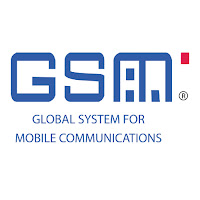GSM uses a form of Modulation known as GMSK.
What is GMSK Modulation?
Gaussian Minimum Shift Keying, also known as Gaussian filtered Minimum Shift Keying in full is a type of modulation used in a variety of digital radio communications systems.
One major advantage of GMSK is that it is able to carry digital modulation while being able to use the spectrum efficiently. This is not possible in other forms of phase shift keying in that the sidebands extend outwards from the main carriers hence they can cause interference to other radio communications systems using nearby channels.
Due to its efficient use of the spectrum, GMSK modulation has been used in a number of radio communications applications. The most notable one being in GSM Cellular Networks which has billions of subscribers worldwide.
The GMSK basics
GMSK modulation is derived from MSK, which is a type of Continuous-Phase Frequency-Shift Keying. One major disadvantage of PSK is that sidebands extend out from the carrier causing noise in the nearby channels. To overcome this problem, MSK and its derivative GMSK can be used.
GMSK is also known as Continuous Phase Scheme. In GMSK the frequency difference between logical one (1) and logical zero(0) is equal to half the data rate
.
GMSK can be generated through two methods :
a) Through filtering of signals using a Gaussian filter with a modulation index of 0.5. This method is not widely used because it is difficult to obtain a modulation index of exactly 0.5.
b) Another method is where the quadrature modulator is used (phase of the angle is 90° to another). This form is also known as I-Q Modulator since it is dependent on the In phase and quadrature of the signals. This enables the Modulation index to be set to 0.5 exact. The signal thus cannot be distorted since it is not carried in terms of amplitude elements.

